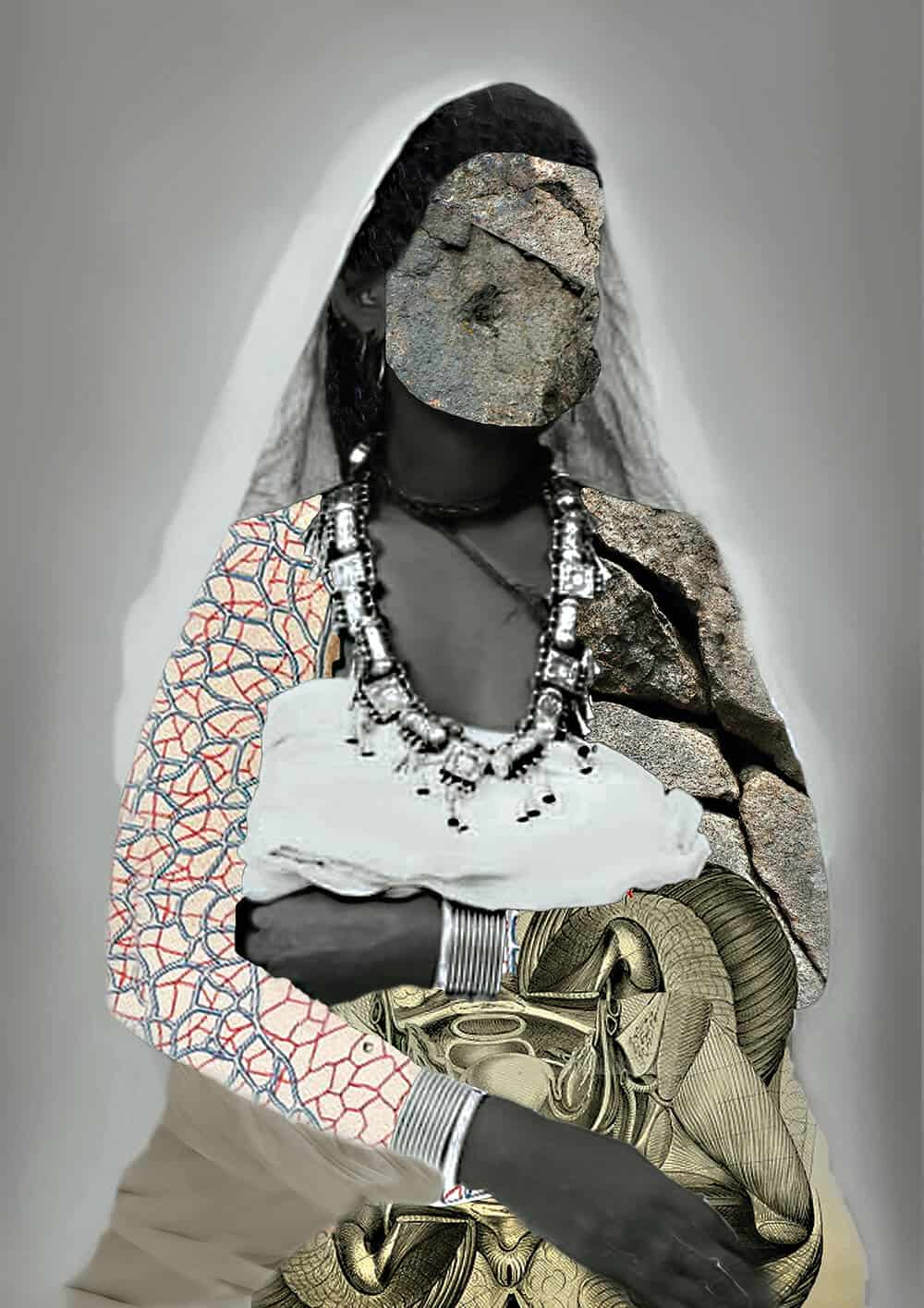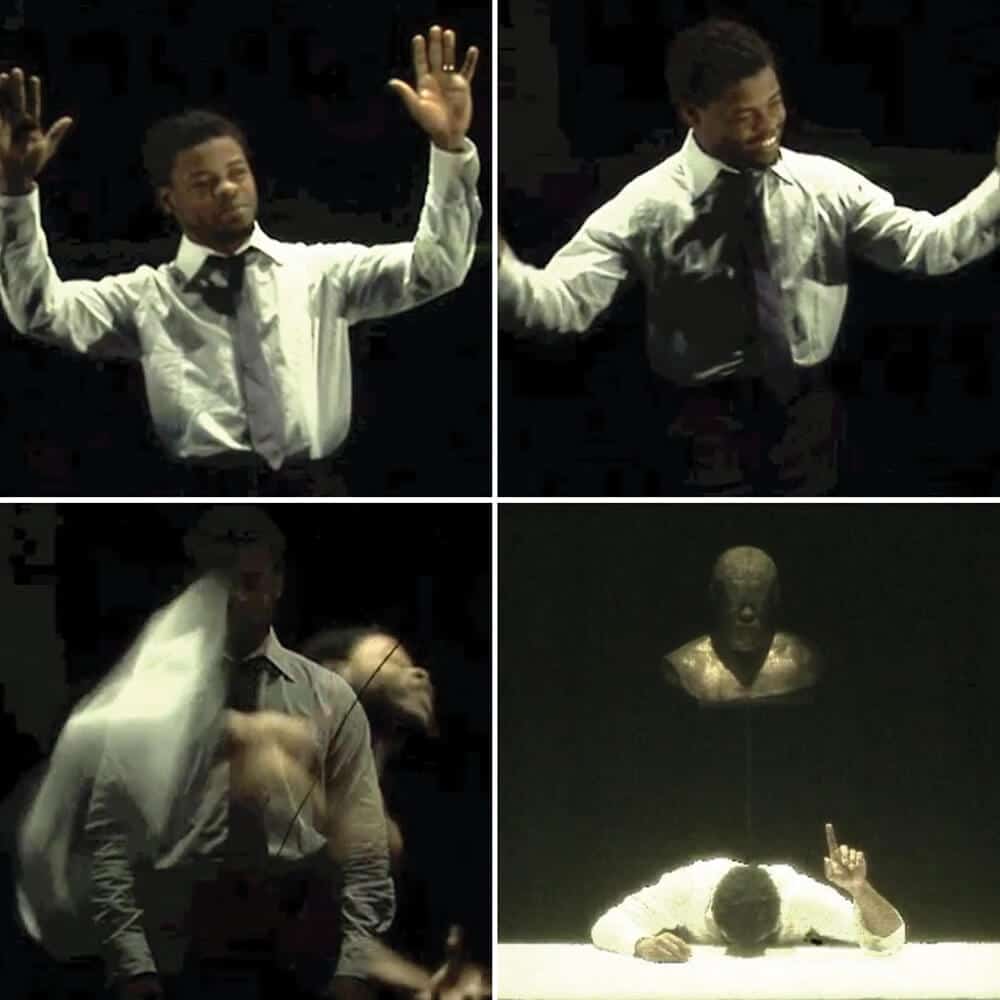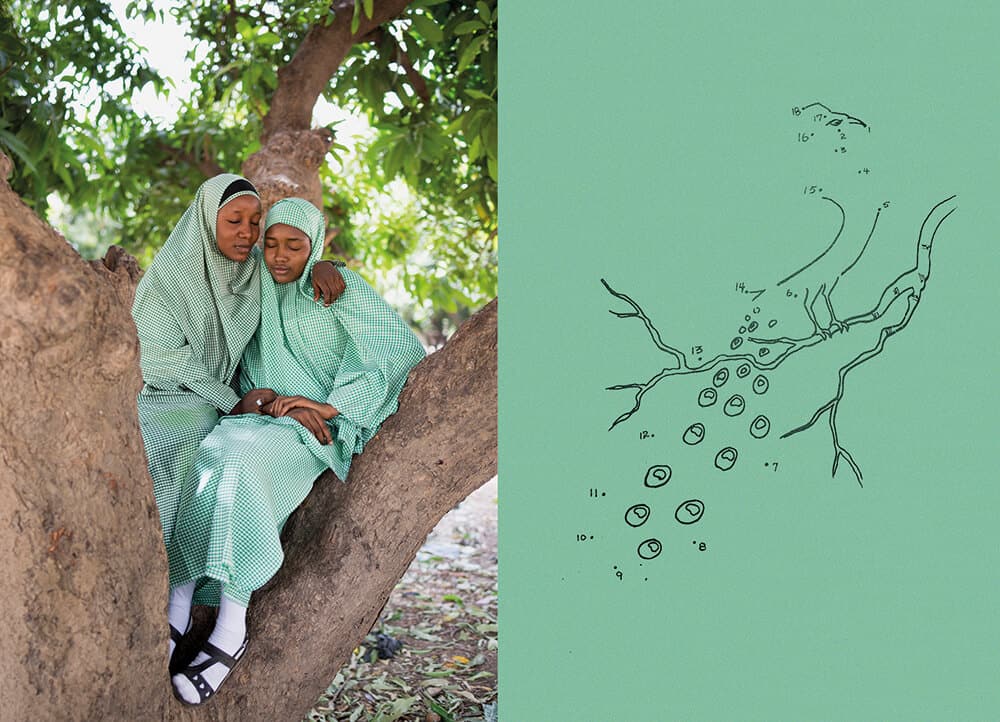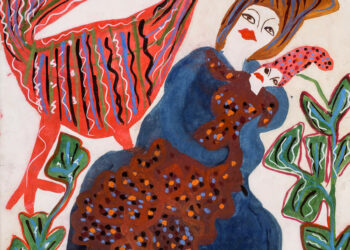Marie-Ann Yemsi on Rencontres de Bamako
French Translation after English.
Over the last few centuries, Africa has been the subject of a discourse that is both spoken and thought about by others on its behalf. The continent has been subjected to the rule of others, and set on a path to follow the politics, economies, social teleology’s and social models of those foreign to its own – and it can be argued that to this day, Africa still looks to the West for guidance.
This is the challenge that Marie-Ann Yemsi – cultural consultant and curator – is faced with in taking on the role of artistic director of the 11th edition of the Rencontres de Bamako in Bamako, Mali. And in a country that in recent years has suffered droughts, rebellions, a coup, 23 years of military dictatorship and a jihadist insurgency in the central and northern regions, it is even more pertinent that Yemsi address the intellectual, emotional and physical independence that Africa has been denied for so long.
Looking to the musings of Frantz Fanon, where he stated that “if we want humanity to advance a notch, then we must invent, we must discover,” and the writings of philosopher and economist Felwine Sarr – Yemsi has developed ‘Afrotopia’ as the overarching theme of the Biennale, and is using culture as her only weapon in fighting for African potential.
 Lola Keyezua, Stone Orgasms, 2015. © Lola Keyezua
Lola Keyezua, Stone Orgasms, 2015. © Lola Keyezua
A contraction of both ‘Africa’ and ‘Utopia’, ‘Afrotopia’ speaks of a continuity between the real and the possible, and for Yemsi, Sarr’s essay was the starting point of something new. It lent itself to the development and nurturing of ideas that have always been a part of Africa – promoting the idea that all the tools are in Africa – “we don’t need the Western world or Europe all the time.”
In attempt at promoting pedagogical thought and an internal ownership over Africa, Yemsi has compared Africa to artists, and challenged curators, cultural consultants, publications, institutions, art critics and collectors to stop speaking on behalf of artists, and rather listen carefully to both them and their work. Artists, and perhaps even more so photographers, see the realities that are there, bearing witness to what is happening across the globe – and, in turn, artists both shape the world and give us clues about the future.
But this way of thinking was not coming from outside…
it was coming from the continent, and from a new generation of thinkers.
“Culture is a weapon, and this is the only weapon I have. To be there, build this programme, engage with the issues – and as its title ‘Afroptopia’, we are going to engage with the contemporary realities of Africa [as] seen by the artists who are the best witnesses to that.
And especially, photographers. They are people working with images, they see what happens in reality. They see the realities that are there, so that we can imagine them and how we can exercise these realities, and have all these fantasies around what is Africa today. For me, it is important to be there, for this 11th edition and to question what this biennale is for. First of all, as an act of resistance; and secondly, a Biennale should also bring something different as the artistic landscape in Africa has changed totally. Now you have all these events, like festivals, fairs, big institutions like Zeitz MOCAA, and all across the continent institutions are opening. But we all know that they all rely on private funding. We also know that in Africa no government is investing in culture – although it’s the same worldwide, it’s not specific to Africa.
I think that the challenge of this Biennale is to continue to offer a freedom of space, and as a curator, that’s how I envisage my work. It’s not to bring statements, and it’s certain that my statement is true, and I put the artworks inside my mission to create a freedom. And to be with the artists, see what happens, what we can create together, what kind of new imaginaries we can create, what kind of new knowledges we can build together, and this is how I have been working for Rencontres de Bamako.
 Qudus Onikeku, Mirror Effect, 2017. Video performance, 10’41”. © Qudus Onikeku
Qudus Onikeku, Mirror Effect, 2017. Video performance, 10’41”. © Qudus Onikeku
And in saying that, I will concentrate on what I call the immaterial production. What is the immaterial production? This is the word ‘encounters’, and I would like to focus on what it means. For me, to focus on what the artists have to say, and most of the time – sorry to say this because you are a publication, but – I think that, and even more so now, that the trend is on Africa. First of all, I think that as soon as the artists start to have a small reputation, their work is largely brought by foreigners and taken outside of Africa. So, it’s leaving Africa. Secondly, we are all speaking in the name of artists – I take my part of responsibility as a curator and cultural consultant – but you also, all the publications institutions, art critics, collectors. So it’s also time to listen to what they have to say, and what they have to say is not always in academic ways, they don’t have PhDs, but we have to listen carefully to their work, because they are scrutinising the word ‘Africa’, the continent; they are creating new narratives and it’s very important to create new narratives around our history – not always the history of colonialism – but also the very recent history of responsibility of the parents building Africa today, and we have to listen to how they fictionalise and how they witness what is happening, because they are shaping the world, and they are giving us clues about the future.
So back to the Biennale and the title – my title has raised many, many questions – ‘Afrotopia’ is a contraction of Africa and Utopia. I borrowed the title from an essay by a very brilliant thinker – Felwine Sarr, an economist based near Dakar. He is teaching economics, but he is also a novelist, a musician, a poet, and when his book was launched two years ago, it was really a shock for me, and then it was followed by the Les Ateliers de la Pensée – a gathering of many thinkers organised in Dakar.
It was kind of a starting point of something very new, of the development of ideas; well there’s always been ideas, but rather a new way of thinking [about] the continent and what is happening. But this way of thinking was not coming from outside of the continent; it was coming from the continent, and from a new generation of thinkers.
And this is very important, because they put many new things on the table, and first of all the idea that all the tools are here, and that we don’t need the Western world and Europe all the time. And this statement is very important so I really wanted to have this title; first of all, I liked this kind of title that incorporated poetry, but also being understood in all languages – understood or not – that leaves the imagination free.
That’s why, as a curator, I don’t want to have a statement – to say, okay, artist, you have to follow that – I wanted to create a space of freedom, and let them think by themselves, and answer with an artistic production and by being involved very actively.
I will replace a traditional talks programme with what I call the Forum. This will be a space of encounters between artists and other thinkers – should they be writers, musicians, philosophers, poets – and it will take place every morning at the National Museum, probably outside, because we want to think about a non-academic format.
 Rahima Gambo, Education is Forbidden, 2015. © Rahima Gambo.
Rahima Gambo, Education is Forbidden, 2015. © Rahima Gambo.
We will have three sessions – one will be based on the investigation/exploration of ‘Afrotopia’ as seen by the artist. So, for instance, Qudus Onikeku – a Nigerian artist – will do a performance involving the audience; and the Black Athena Collective – Heba Amin and Dawit Petros – are going to perform a lecture – so my programme will be based on these kinds of interventions. Most of them are non-classical, even if we will have round tables.
The second session will be around images, and how can we deconstruct them? What is the role and responsibility of artists when they manipulate images? In the world of proliferation, this constant flux of images – how can we just stop and analyse all this? In the shows you have artists like the pan-African exhibition. But also in the other exhibition, you have artists that are working more on artistic series or videos, but others are also documenting complex zones – like Teddy Mesina.
I have a curatorial advisory committee, and they were really interested in digging – especially Simon Baleshi, whose work is based on that.
Culture is a weapon, and this is the only weapon I have.
And the third session will be a collective reflection on where are we going. What is the future of this biennale, and other biennales on the continent? And how can we now think about new methods of artistic production. Can we be engaged in new ways of curating, a new pedagogy? This is exactly what Bisi Silva has been doing with Iziko – the South African National Gallery – and now with this very important publication on exactly the same kind of questions. So, it’s also the role of the biennale and my project to be together, and to think about the future, and what we can gain from an African perspective because really, it’s time to imagine new ways of producing art and Africa.
 Alain Polo, Série blanche, 2016. Courtesy of the artist and Revue Noire, Paris. © Alain Polo
Alain Polo, Série blanche, 2016. Courtesy of the artist and Revue Noire, Paris. © Alain Polo
In terms of exhibitions – you’ll have the pan-African exhibition with 40 projects, I don’t say artists because some of them are collectives.
Questioning what a biennale is – this biennale is on photography and what photography means today. I wanted to put the emphasis on new images; first of all, because they are using everything, Instagram images, and also shed the light on the new production and the new way of – well a lot of photographers and video artists are now working at the intersection of interdisciplinary work, so I really wanted the biennale to reflect that growing interest of artists working at this kind of intersection of disciplines.That’s why we will have, not only a photographic series, but also videos and installations.
In the pan-African exhibition, and all the projects, the invited curators have been asked to dig more deeply into some issues that we felt were important. The idea was in building an Africa of tomorrow. There’s a feeling coming from the artists that as soon as you are based in the Caribbean, or any other islands, you are kind of forgotten. And you’re forgotten as a person, you’re forgotten as an artist. So it was interesting for me – this idea of being at the margins and we also wanted to dig more into the recent histories on the continent, and the erasure of some events. That’s how I’ve been building the programme.”
– Marie-Ann Yemsi
French Translation
Les siècles derniers, l’Afrique a été l’objet d’un discours à la fois prononcé et conçu par d’autres, en son nom. Le continent a été soumis à une loi extérieure et placé sur le chemin de la politique, de l’économie, de la téléologie et des modèles sociaux de pays étrangers, tout à fait différents de ses propres modèles. On peut dire qu’aujourd’hui encore, l’Afrique regarde vers l’Ouest pour être guidée.
Réimaginer l’Afrique est le défi auquel Marie-Ann Yemsi, consultante culturelle et commissaire d’exposition, s’est attelée en acceptant le poste de directrice artistique de la 11e édition des Rencontres de Bamako au Mali. Dans un pays qui, ces dernières années, a connu des sécheresses, des rébellions, un coup d’état, vingt-trois ans de dictature militaire et une insurrection djihadiste dans le centre et au nord du pays, les thèmes de l’indépendance intellectuelle, émotionnelle et physique, si longtemps refusés à l’Afrique, semblent aujourd’hui d’autant plus nécessaires pour Marie-Ann Yemsi.
En allant puiser dans les songes de Franz Fanon, qui affirme que « si nous voulons que l’humanité avance d’un pas, alors nous devons inventer, nous devons découvrir » et en s’inspirant des écrits du philosophe et économiste Felwine Sarr, Yemsi a choisi « Afrotopia » comme thème général de la Biennale, et pense la culture comme arme unique pour défendre le potentiel africain.
 Lola Keyezua, Stone Orgasms, 2015. © Lola Keyezua
Lola Keyezua, Stone Orgasms, 2015. © Lola Keyezua
Association des mots « Afrique » et « utopie », « Afrotopia » parle de la continuité entre le réel et le possible. Pour Yemsi, l’essai de Sarr est un point de départ vers quelque chose de neuf. Cet essai encourage, en effet, le développement et l’avènement d’idées qui ont toujours existé en Afrique, et défend que toutes les ressources se trouvent en Afrique, qu’il est vain d’aller les chercher ailleurs: « nous n’avons pas toujours besoin de l’Occident et de l’Europe. »
En soutenant une réflexion pédagogique et une réappropriation interne de l’Afrique, Yemsi compare l’Afrique aux artistes, et met au défi les commissaires, conseillers culturels, publications, institutions, critiques d’art et collectionneurs d’arrêter de parler à la place des artistes afin de leur donner à eux, ainsi qu’à leur travail, toute l’attention qu’ils méritent. Les artistes, et peut-être encore plus les photographes, observent les réalités le terrain. Ils sont des témoins directs de ce qui se passe dans le monde, en retour ils le transforment et nous donnent des indices sur le futur.
Cette manière de penser n’est pas venue de l’extérieur, au contraire elle est venue du continent et d’une nouvelle génération d’intellectuels.
« La culture est une arme, est c’est la seule que nous aillons. Etre là-bas, construire ce programme, soulever des problématiques avec le thème « Afrotopia » nous permet de parler des réalités contemporaines de l’Afrique au travers du regard des artistes qui en sont les meilleurs témoins.
Et en particulier, je dirais, les photographes. Ce sont des personnes qui travaillent les images, vous savez, ils voient ce qui se passe dans la réalité. Ils enregistrent les réalités du continent, pour que nous puissions les imaginer et agir sur ces celles-ci. Ainsi, ils participent à la création de nos fantasmes sur ce qu’est l’Afrique d’aujourd’hui. Pour moi, c’est important d’être là-bas, d’y être pour la 11e édition et de mettre toutes ces questions sur la table. A quoi sert cette Biennale ? Tout d’abord, c’est un acte de résistance. Ensuite, une biennale doit apporter quelque chose de différent. Vous savez, le paysage artistique en Afrique a complètement changé. Maintenant vous avez tous ces événements, comme les festivals, les foires, de grosses institutions comme le Zeitz MOCAA, et des espaces institutionnels qui ouvrent leurs portes sur tout le continent. Mais nous savons tous que ces inaugurations reposent sur des financements privés. Nous savons aussi qu’en Afrique les gouvernements n’investissent pas dans la culture. En réalité, c’est le cas partout dans le monde, ce n’est pas spécifique à l’Afrique.
Je pense que le défi de cette Biennale est de continuer à offrir un espace libre, et en tant que commissaire, c’est la manière dont j’envisage mon travail. Je n’entends pas arriver avec des idées préconçues, mais bien placer les oeuvres au sein de cet espace ouvert. Mon objectif est d’être avec les artistes, de voir ce qui se passe, ce que l’on peut créer ensemble, quel genre de nouvel imaginaire nous pouvons élaborer, quel type de connaissances nous pouvons construire. C’est précisément la manière dont j’ai travaillé à Bamako.
 Qudus Onikeku, Mirror Effect, 2017. Video performance, 10’41”. © Qudus Onikeku
Qudus Onikeku, Mirror Effect, 2017. Video performance, 10’41”. © Qudus Onikeku
En partant de ce principe, c’est véritablement le contenu de l’exposition qui est intéressant. Je vais me concentrer sur ce que j’appelle la production immatérielle. Qu’est-ce que la production immatérielle ? C’est le mot « rencontres » et j’aimerais m’arrêter sur sa signification. Pour moi, cela veut dire se concentrer sur ce que les artistes ont véritablement à dire, et pas seulement s’y intéresser parce que l’Afrique n’est, la plupart du temps, qu’une mode. Tout d’abord, je pense que dès qu’un artiste commence à avoir une petite réputation, une grande partie de son travail est accaparé par des étrangers et transporté en dehors du continent, donc les œuvres quittent l’Afrique. Ensuite, nous sommes nombreux à parler au nom des artistes africains, et je prends ici ma part de responsabilité en tant que commissaire et consultante culturelle, mais c’est votre cas aussi vous les publications, comme c’est le cas des institutions, des critiques d’arts et des collectionneurs. C’est pourquoi je pense qu’il est temps d’écouter ce que les artistes africains ont à dire. Leur manière de dire n’est pas toujours académique, ils n’ont pas de PhDs. Pourtant, nous devons quand même suivre avec attention leur travail, parce que je pense qu’ils examinent attentivement le mot « Afrique », le continent. Ils créent de nouveaux récits et il est essentiel d’élaborer ces nouveaux récits sur notre histoire, pas seulement celle du colonialisme, mais aussi de ceux qui ont construit l’Afrique d’aujourd’hui. Nous devons écouter la manière dont ils racontent et témoignent de ce qui se passe, parce qu’il me semble que c’est eux qui construisent notre monde, et c’est eux qui nous donnent des clefs sur le futur.
Revenons à la Biennale et à son titre (mon titre a soulevé beaucoup, beaucoup de questions). « Afrotopia » est une contraction d’Afrique et d’utopie. J’ai emprunté ce nom à un essai du brillant penseur Felwine Sarr, un économiste de la région de Dakar. Il enseigne l’économie, mais c’est aussi un romancier, un musicien, un poète, et je crois que lorsque son livre a été publié, il y a deux ans, ça a été un choc pour moi. Ce livre a été suivi par « Les Ateliers de la Pensée », un rassemblement de plusieurs penseurs à Dakar.
Pour moi, cet essai a été un point de départ vers quelque chose de très neuf, un nouvel élan d’idées ; enfin il y a toujours eu des idées, mais plutôt une nouvelle manière de penser le continent et ce qui s’y passe. Cette manière de penser n’est pas venue de l’extérieur, au contraire elle est venue du continent et d’une nouvelle génération d’intellectuels.
C’est vraiment important, parce qu’ils sont les porte-paroles de nouvelles idées. En premier lieu, l’idée que toutes les solutions sont là, et que nous n’avons pas tout le temps besoin de l’Occident et de l’Europe. Cette déclaration est très importante, alors j’ai vraiment insisté pour avoir ce titre. J’aime ce titre avant tout car il est poétique, il laisse parler l’imagination, et il peut être compris dans plusieurs langues.
C’est la raison pour laquelle, en tant que commissaire, je ne veux pas avoir de consignes claires envers les artistes. Je veux créer un espace libre, pour permettre aux artistes de penser par eux-mêmes, tout en étant impliquée activement.
Je vais aussi remplacer le traditionnel programme de conférences par ce que j’appelle un « Forum ». Ca sera un espace de rencontres entre artistes et penseurs, qu’ils soient écrivains, musiciens, philosophes, poètes. Ce forum aura lieu chaque matinée au musée national, sûrement à l’extérieur, car nous ne voulons pas que le forum soit trop académique.
 Rahima Gambo, Education is Forbidden, 2015. © Rahima Gambo
Rahima Gambo, Education is Forbidden, 2015. © Rahima Gambo
Nous aurons trois sessions différentes. La première se concentrera sur l’exploration de l’« Afrotopia », vue par les artistes. Par exemple, l’artiste nigérian Gudus Onikeu fera une performance participative, et le collectif Balck Athena (Heba Amin et Dawit Petros) donnera une conférence. Mon programme sera donc constitué de ces différents types d’intervention. La plupart seront non-conventionnelles, même si nous aurons aussi des tables-rondes.
La seconde session se concentrera sur les images, sur le processus derrière leur construction, sur le rôle, la responsabilité des artistes lorsqu’ils les manipulent, et sur la manière dont nous nous arrêtons devant elles et comment nous les analysons dans un monde où elles prolifèrent. Cette seconde session s’intéressera notamment aux artistes de l’exposition pan-africaine, mais aussi à des artistes d’autres expositions qui travaillent davantage sur des séries ou des vidéos, ou qui documentent des zones compliquées, comme Teddy Mesina.
La culture est une arme, est c’est la seule que nous aillons.
Enfin la troisième session prendra la forme d’une réflexion collective sur la direction que nous envisageons, sur le futur de la Biennale et d’autres biennales sur le continent, et sur les différentes solutions que nous pouvons imaginer aujourd’hui pour penser de nouvelles productions artistiques. Comment susciter la conception d’expositions complètement originales associées à une pédagogie nouvelle ? C’est précisément ce qu’a fait Bibi Silva avec Iziko, et maintenant avec cette importante publication éponyme qui aborde ces questions. Je pense que c’est également le rôle d’une biennale que de penser collectivement au futur, à ce que l’Afrique a à offrir, car il est temps d’imaginer de nouvelles manières de produire l’art et de façonner l’Afrique.
 Alain Polo, Série blanche, 2016. Courtesy of the artist and Revue Noire, Paris. © Alain Polo
Alain Polo, Série blanche, 2016. Courtesy of the artist and Revue Noire, Paris. © Alain Polo
En ce qui concerne les expositions, il y aura l’exposition pan-africaine avec 40 projets (je ne parle pas d’artistes parce que certains font partie de collectifs).
En se posant les questions suivantes : qu’est-ce qu’une biennale – cette Biennale est sur la photographie, mais qu’est-ce que cela veut dire la photographie aujourd’hui – je voulais mettre l’accent sur de nouvelles images. Avant tout, parce qu’aujourd’hui, les images se servent de toute sorte de médias, comme les photos Instagram, et mettent en lumière de nouvelles productions. Beaucoup de photographes et d’artistes, qui travaillent la vidéo, travaillent aujourd’hui au carrefour de plusieurs arts, donc je voulais vraiment que la Biennale reflète cet intérêt grandissant qu’ont les artistes à croiser différentes disciplines. C’est la raison pour laquelle nous n’aurons pas seulement des photographies mais aussi des vidéos et des installations. Et c’est plutôt original, tout comme les performances des artistes pendant le Forum.
Dans l’exposition pan-africaine, et c’est vrai pour tous les projets, les commissaires invités ont été encouragés à aller plus loin dans l’exploration de certaines problématiques que nous considérons comme primordiales. L’idée phare est la construction de l’Afrique de demain, mais nous abordons aussi le sentiment éprouvé par des artistes caribéens, qu’à partir du moment où ils habitent les Caraïbes ils sont oubliés en tant qu’artiste. C’était intéressant pour moi de questionner ce sentiment d’être à la marge. Nous avons également souhaité aborder certains événements récents sur le continent, souvent effacés. C’est la manière dont j’ai construit le programme. »
– Marie-Ann Yemsi
Ellen Agnew is a writer on ART AFRICA’s editorial team.



